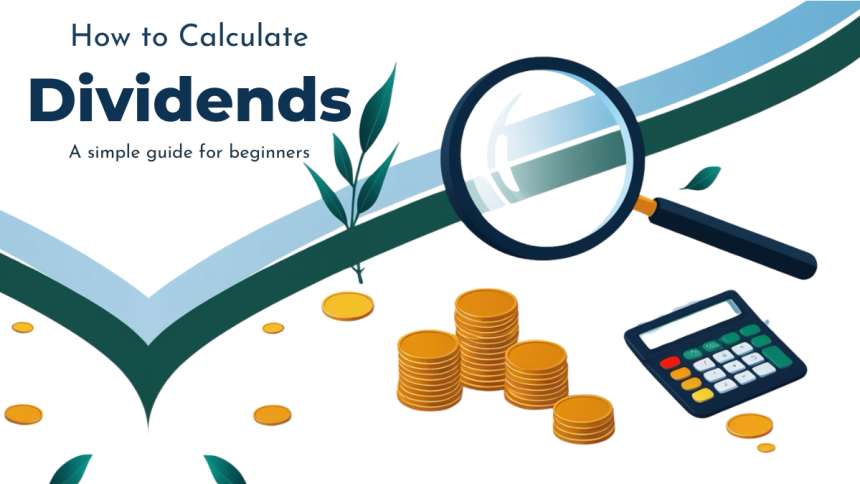Acquire the process of how to calculate dividends. Learn major equations, dividend types, examples and where dividend-paying stocks can work to your advantage in the portfolio.
Understanding What Dividends Are
Dividends refer to payments that companies pay to their shareholders in terms of either money or extra stocks. They describe a part of the money that the company makes and is given out as a reward to investors who have handed over their money by buying the stock.
Companies do not all pay dividends, although payment is common during their later stages (and as a result, stable financially). The knowledge on how to compute dividends would enable investors to calculate possible incomes on their investments and therefore make the necessary portfolio decisions.
Why Dividends Matter to Investors
Dividends yield a consistent flow of cash as well as can help in the development of wealth on the long-haul. They are of particular interest to the retirees or the income-oriented investors who depend on steady returns.
Moreover, timely paying and progressive paying companies are usually regarded as financially stable and efficiently run companies. The knowledge on how to compute dividends allows you to assess your actual rate of recompense of your investment instead of focusing on stock price growth.
The Basic Formula to Calculate Dividends
The simplest way to calculate dividends is:
Dividend = Number of Shares Owned × Dividend per Share
For example, if you own 100 shares of a company and the company pays a $0.50 dividend per share, your total dividend income would be:
100 × $0.50 = $50
This formula applies to both quarterly and annual dividends, depending on how often the company pays them.
How to Find the Dividend Per Share (DPS)
The Dividend Per Share (DPS) is usually announced by the company or found in financial news sources and investor reports. DPS can be calculated using:
DPS = Total Dividends Paid ÷ Total Number of Outstanding Shares
If a company paid $10 million in total dividends and has 5 million shares outstanding, then:
DPS = $10,000,000 ÷ 5,000,000 = $2.00
This $2 is the amount paid per share, which you can then multiply by the number of shares you own to calculate your total dividend income.
Annual vs. Quarterly Dividends
A majority of the companies are given quarterly dividends and hence are four annually. Nevertheless, there are dividends which pay annually, semi-annually or even monthly. For example, take a company that will pay an annual dividend of 1.20 and assume the company is going to pay quarterly, then each time you will get $0.30 per share. It is necessary to verify the frequency so that your anticipated cash flow due to dividends could be effectively calculated.
Understanding Dividend Yield
Dividend Yield is another important concept. It tells you how much dividend income you earn in relation to the stock’s price:
Dividend Yield = (Annual Dividend per Share ÷ Price per Share) × 100
If a stock pays $4 per year and is priced at $100, then:
Yield = (4 ÷ 100) × 100 = 4%
This 4% is your return just from dividends, not counting stock price gains or losses. Comparing dividend yields helps investors assess which stocks provide better income potential.
Special vs. Regular Dividends
Sometimes firms may also undertake special dividends; that is, paying an additional amount of dividends in odd situations. They usually happen when a company has surplus cash or large event such as a sale of assets. Separate announcements are used to inform investors about special dividends, which are not recurring, but are calculated in the same way (DPS times the number of shares), and they are not expected on a regular basis.
How Reinvested Dividends Affect Calculation
Other investors even have the option to do DRIP (Dividend Reinvestment Plans). This time, you would not get cash but your dividend value would be used to purchase additional stocks of the same share. Although this does not impact on Windows 10 product key how the dividends are calculated, it will impact on the future payment you will be getting as because you will now be owning more shares, and with each share earning its own dividend your returns can just be compounded.
Using Online Calculators and Broker Statements
This can even be done online using several online dividend calculators who give you an option of keying in the number of shares and dividend data to arrive at your pay. Also, many of the brokerage accounts have the calculation of your dividend income installed and you will see the amounts you are going to get and also the option of reinvesting and the tax consequences all figured out.
Dividend Tax Considerations
In majority of the countries, the earnings of the dividend are regarded as an income approached to tax. In the U.S, to give one example, qualified dividends are taxed at a lower rate, and non-qualified dividends may be taxed at your regular income rate. Whenever you are calculating your net dividend income, it is always good to put taxes into consideration, particularly when you intend on financing retirement or acquiring passive income.
Common Mistakes to Avoid When Calculating Dividends
Some of the errors that beginners will commit are using dated figures in DPS, disregarding the frequency of payment (quarterly or annually), or assuming that all dividends will be received. However, keep in mind that the dividends of a company can be cut, suspended, or withdrawn in case of financial changes. Before making investment decisions on dividend earnings, it is always necessary to use the latest and factual information.
Conclusion
Being able to calculate dividends will help you in the process of assessing an income generating investment. With a suitable knowledge of dividend per share, dividend yield, and reinvestment effects, you will have the chance to be a smarter planner and put a feasible financial plan.
Dividends have the potential to pay off whether you are investing dividend stocks to generate passive income or investing long-term. All you need to do is keep yourself posted with the latest developments of the company and make it easier to chart the company by using operational tools like an online calculator or a brokerage statement.
Lynn Martelli is an editor at Readability. She received her MFA in Creative Writing from Antioch University and has worked as an editor for over 10 years. Lynn has edited a wide variety of books, including fiction, non-fiction, memoirs, and more. In her free time, Lynn enjoys reading, writing, and spending time with her family and friends.















